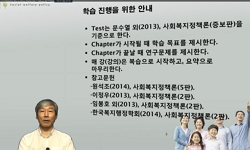In the 1990s Chinese fictions, narratives of masculinity are summarized in three aspects. Firstly, male egos manifest masculinity which aspires to be dominative. the pursuit to hegemonic masculinity accompanies self objectification and loss of his ide...
http://chineseinput.net/에서 pinyin(병음)방식으로 중국어를 변환할 수 있습니다.
변환된 중국어를 복사하여 사용하시면 됩니다.
- 中文 을 입력하시려면 zhongwen을 입력하시고 space를누르시면됩니다.
- 北京 을 입력하시려면 beijing을 입력하시고 space를 누르시면 됩니다.
부가정보
다국어 초록 (Multilingual Abstract)
In the 1990s Chinese fictions, narratives of masculinity are summarized in three aspects. Firstly, male egos manifest masculinity which aspires to be dominative. the pursuit to hegemonic masculinity accompanies self objectification and loss of his identity. Secondly, hegemonic masculinity is ambilateral. The successful male lacks relationship, only to prove that the practice of hegemonic masculinity is in discord with masculinity which has been provided by patriarchism. Finally, the heterogenized heroic masculinity has been created. It simultaneously embraces positive qualifications of traditionally heroic male identity and the commercialistic trait that goes with the consumeristic society. Meanwhile, the masculinity featuring elimination of everything non masculine reveals nervousness and anxiety for its weakening. Hereby, male narratives in the 1990s Chinese fictions expose precariousness of masculinity with two features. The hegemonic masculinity causes precariousness because it disagrees with the masculinity that is required to practice gender roles granted by the patriarchal system. Also, masculinity becomes precarious because it claims to be powerful. The request for powerful masculinity reminds it of masculinity that leads to control and power. Since the powerful masculinity is built on eliminations of non masculine traits, it contains dangers of isolation and discord. Then it becomes a major precariousness conceived in the strong masculinity.
참고문헌 (Reference)
1 한국영미페니니즘연구학회, "페미니즘, 어제와 오늘" 민음사 2000
2 최은정, "츠리(池莉) 소설에 나타난 ‘집’의 의미 고찰" 비교문화연구소 47 : 291-312, 2017
3 줄리아 우드, "젠더에 갇힌 삶" 커뮤니케이션 북스 2006
4 Christopher T. Kilmartin, "우리 안의 남성" 학지사 2009
5 신경아, "신자유주의시대 남성 생계부양자의식의 균열과 젠더관계의 변화" 한국여성학회 30 (30): 153-187, 2014
6 조지 L 모스, "남자의 이미지" 문예출판사 2004
7 피에르 부르디, "남성지배" 동문선 2003
8 토마스 퀴네, "남성의 역사" 솔 출판사 2001
9 이영자, "남성성의 사회적 구성과 성의 정치" 5 : 2001
10 존 베이넌, "남성성과 문화" 고려대학교 출판부 2011
1 한국영미페니니즘연구학회, "페미니즘, 어제와 오늘" 민음사 2000
2 최은정, "츠리(池莉) 소설에 나타난 ‘집’의 의미 고찰" 비교문화연구소 47 : 291-312, 2017
3 줄리아 우드, "젠더에 갇힌 삶" 커뮤니케이션 북스 2006
4 Christopher T. Kilmartin, "우리 안의 남성" 학지사 2009
5 신경아, "신자유주의시대 남성 생계부양자의식의 균열과 젠더관계의 변화" 한국여성학회 30 (30): 153-187, 2014
6 조지 L 모스, "남자의 이미지" 문예출판사 2004
7 피에르 부르디, "남성지배" 동문선 2003
8 토마스 퀴네, "남성의 역사" 솔 출판사 2001
9 이영자, "남성성의 사회적 구성과 성의 정치" 5 : 2001
10 존 베이넌, "남성성과 문화" 고려대학교 출판부 2011
11 R. W. 코넬, "남성성/들" 이매진 2013
12 毕飞宇, "那个夏季那个秋天" 人民文学出版社 2015
13 孙兰, "英雄礼赞:文学的历史责任" (1) : 2001
14 池莉, "第8届百花奖获奖作品集" 百花文艺出版社 2000
15 蔡翔, "私人性和相关的社会想象" (4) : 1996
16 黄河, "男性研究对性别平等教育的意义" (2) : 2008
17 雷金庆, "男性特质论" 江苏人民出版社 2012
18 陈建光, "男性意识与文学性征" (2) : 2003
19 최은정, "池莉의 <有了快感你就喊>에 나타난 남성성 고찰" 영남중국어문학회 (71) : 43-67, 2016
20 池莉, "池莉近作精选" 长江文艺出版社 2003
21 池莉, "水与火的缠绵" 北京十月文艺出版社 2010
22 毕飞宇, "毕飞宇文集・轮子是圆的" 江苏文艺出版社 2004
23 雷达, "当今文学审美趋向辨析"
24 徐艳蕊, "媒介与性别 : 女性魅力, 男子气概及媒介性别表达" 浙江大学出版社 2014
25 王晓明, "在新意识形态的笼罩下" 江苏人民出版社 2000
26 刘传霞, "全球化与消费主义话语中的男性再现" (8) : 2015
27 刘复生, "从欢乐英雄到历史受难者" (6) : 2005
28 都梁, "亮剑" 北京联合出版公司 2014
29 张伯存, "中国当代文学和大众文化中的男性气质" 华东师范大学 2006
30 张慧瑜, "三类男性形象与主流意识形态的重建" (4) : 2012
31 刘传霞, "1950~1970年代中国文学的男性想象" (7) : 2016
동일학술지(권/호) 다른 논문
-
- 영남중국어문학회
- 박향란
- 2020
- KCI등재
-
현대 중국어 조사 ‘급(給)’의 고찰-‘파(把)……급(给)V’격식을 중심으로-
- 영남중국어문학회
- 김미성
- 2020
- KCI등재
-
중국어 수사 ‘一’의 문법화에 관한 통시적·공시적 분석
- 영남중국어문학회
- 이슬기
- 2020
- KCI등재
-
- 영남중국어문학회
- 郭兴燕
- 2020
- KCI등재
분석정보
인용정보 인용지수 설명보기
학술지 이력
| 연월일 | 이력구분 | 이력상세 | 등재구분 |
|---|---|---|---|
| 2027 | 평가예정 | 재인증평가 신청대상 (재인증) | |
| 2021-01-01 | 평가 | 등재학술지 유지 (재인증) |  |
| 2018-01-01 | 평가 | 등재학술지 유지 (등재유지) |  |
| 2015-01-01 | 평가 | 등재학술지 유지 (등재유지) |  |
| 2011-01-01 | 평가 | 등재학술지 유지 (등재유지) |  |
| 2009-01-01 | 평가 | 등재학술지 유지 (등재유지) |  |
| 2007-01-01 | 평가 | 등재 1차 FAIL (등재유지) |  |
| 2004-01-01 | 평가 | 등재학술지 선정 (등재후보2차) |  |
| 2003-01-01 | 평가 | 등재후보 1차 PASS (등재후보1차) |  |
| 2002-01-01 | 평가 | 등재후보학술지 유지 (등재후보1차) |  |
| 1999-07-01 | 평가 | 등재후보학술지 선정 (신규평가) |  |
학술지 인용정보
| 기준연도 | WOS-KCI 통합IF(2년) | KCIF(2년) | KCIF(3년) |
|---|---|---|---|
| 2016 | 0.2 | 0.2 | 0.22 |
| KCIF(4년) | KCIF(5년) | 중심성지수(3년) | 즉시성지수 |
| 0.18 | 0.19 | 0.498 | 0.08 |




 KCI
KCI KISS
KISS





